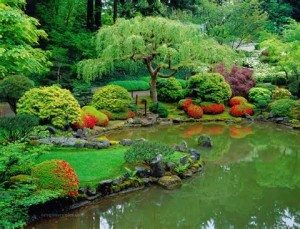
Planning is essential when you’re considering building a fish pond. Keep in mind that once your pond is constructed you won’t be able to move it around as you would an aquarium.
Checklist for planning your fish pond design
- Consider the appearance and size
- Think about the materials you’ll use in constructing your pond
- How much do you want your pond to be elevated or sunken?
- The type of form/shape of the fish pond
- Will the pond have plant life?
- How far will the pond be located from your house?
- Importantly, consider the filtration system
Click here for more information about choosing pond water pumps.
If you don’t take these factors into consideration and rush into construction, things are bound to go wrong.
Best location for your pond
1. The pond should be sheltered from blowing winds to keep the temperature moderate and steady.
This needs to be considered for an elevated pond, more so than a sunken one.
2. Avoid tree branches overhanging the fish pond.
- Trees can contaminate the water with sap or the fecal matter produced by birds sitting in the tree.
- In autumn you also have to deal with the leaves falling from the branches into the pond.
- Note: tree roots always follow the water. These roots can cause some harm to the pond and any surrounding concrete.
Benefits of the fish pond being situated close to the house
- It’s easier for you to take care of the goldfish and the pond
- Setting up the outdoor fish pond will be less expensive as far as connecting pipes to the filtration system, electric supply and drains.
- Verify the locations of these connections so you will know exactly where you will or will not be able to locate your pond.
- You’ll have the benefit of enjoying your pond from a window in your house on a not so sunny day.
When locating the pond near your house, ideally choose a lower point so your fish pond will look normal or natural. A wonderful and ingenious use of space.
